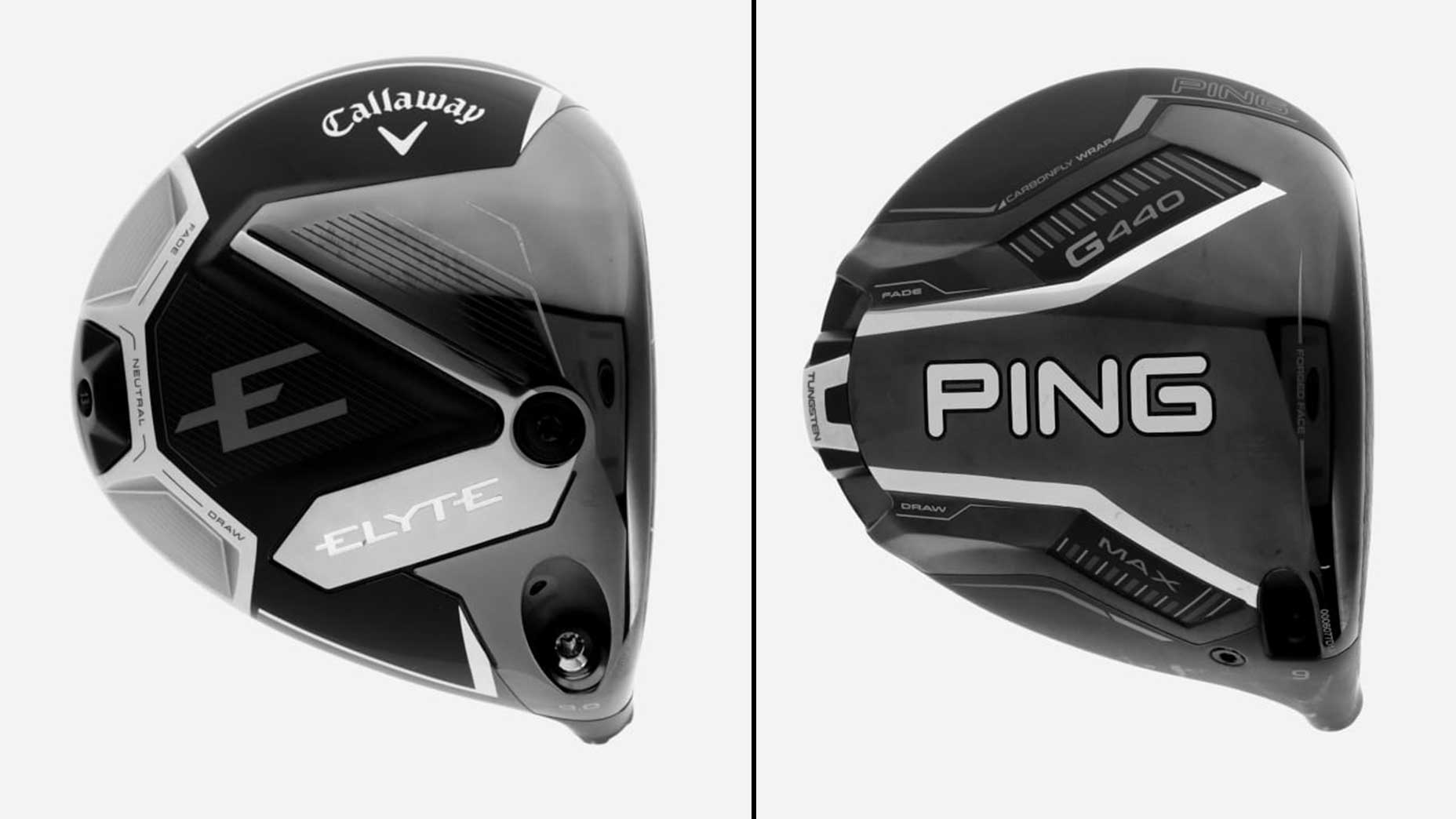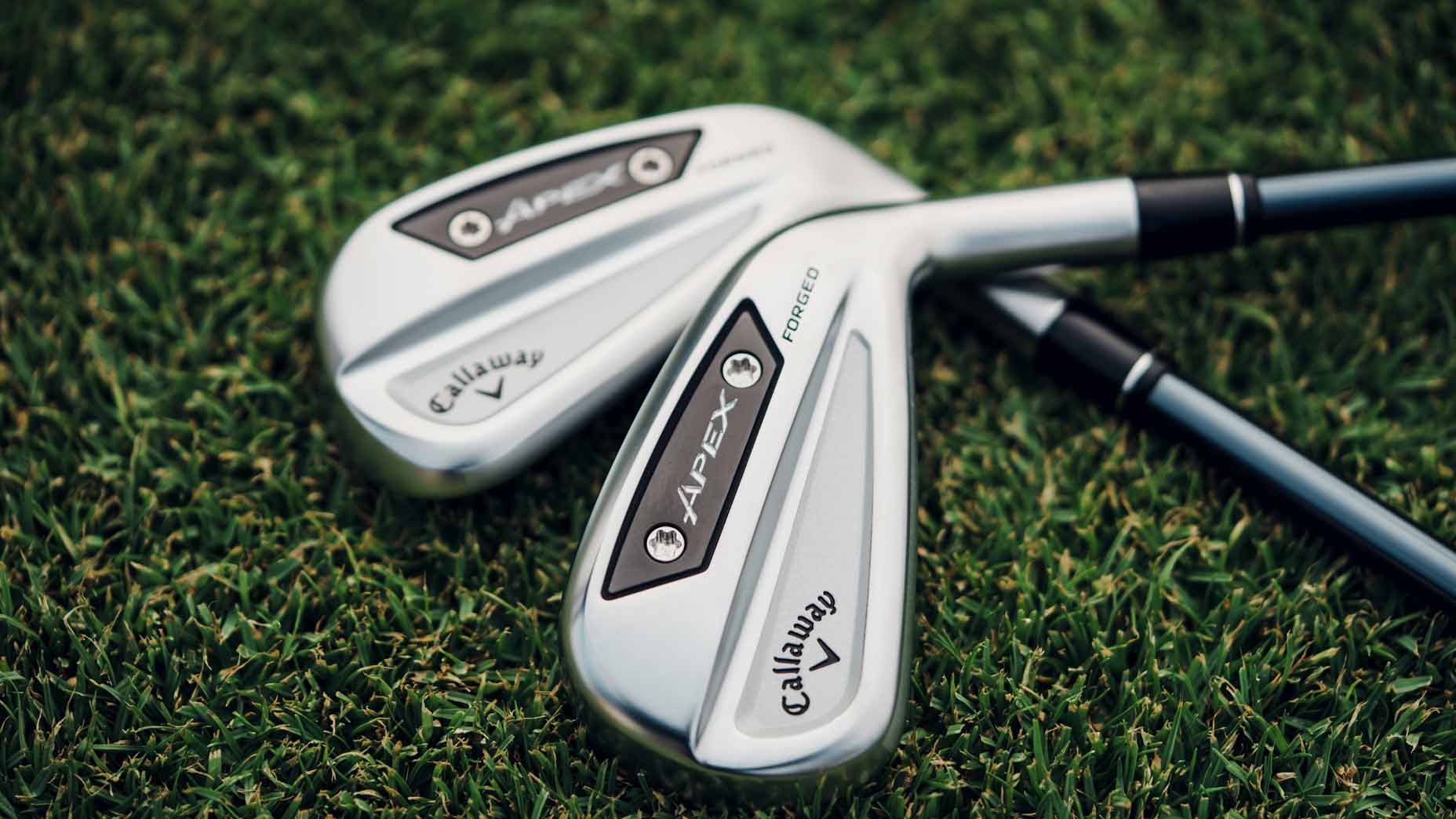Tour reps explain how new guidelines impact on-site gear testing for players
- Share on Facebook
- Share on Twitter
- Share by Email

A sign at the Charles Schwab Challenge reminds players to practice social distancing.
Getty Images
If PGA Tour players were NASCAR drivers, then equipment Tour reps would be their pit crew.
Every week on the PGA Tour, Tour reps from their respective equipment companies help players with their gear needs. These reps handle everything from getting players new hats and golf balls, to fitting players into new equipment and building clubs.
On a typical week – prior to any social distancing guidelines – Tour reps flood the range and putting greens to help players and staffers dial in their gear. If a driver weight needs to be adjusted on the spot, or a hosel adjustment needs to be made, Tour reps usually handle that. They run from the equipment trucks to the range, and back, countless times during the practice round days.
Life is different now, though, and the jobs of Tour reps have been amended.
On our most recent Fully Equipped podcast episode, we spoke to Ping Tour rep Kenton Oates and Callaway Tour rep Jacob Davidson to find out how their roles have changed due to social distancing (listen to the full episode below).
The most prominent change is there’s now a “sanitation station” that equipment must pass through. Every time a golf club changes hands between a player and an equipment rep, it gets cleaned.
Here’s how it works: Let’s say a player on the range is hitting a driver but he wants to switch the shaft out. He’ll then drop the driver at the cleaning station and send the rep a text. Then, the equipment rep will go to the truck and change out the shaft. The rep will drop the new club into the cleaning station, and the player will pick it up when it’s sanitized.
That’s not the only change, either.
Each player in the field is given a “plus-one” guest pass they can use for a swing coach or Tour rep. So, if the player wants to conduct testing on the range and have a Tour rep watch, they can make that happen. The difference between now and the past, however, is that they need to maintain at least 6 feet of space. That means the Tour rep can watch the testing session and make comments or give instructions, but they can’t touch the equipment.
“I was with Victor Perez on the driving range this morning, because he gave me a plus-one pass,” Oates explained. “We’re doing driver testing, and I have to stay 6 feet or more away from him, so I’m standing back. We have Trackman on, so we’re good with that. But it’s easy for me to want to just go make an adjustment for the driver, but in this situation, I just had to relay adjustments to his caddie. ‘Put this driver in this setting’… and ‘hey, make sure that clicks one time so the head doesn’t go flying down the range.’”
The new guidelines have added a few extra steps to the process for players and Tour reps, but Oates recognizes the bigger picture.
“It’s as effective as everyone’s going to make it be, and I think all companies are on the same team,” Oates said. “We need everybody to be on the same page in these events. Just take a step back and do what the Tour is asking so we can keep playing golf and keep doing this, because this is obviously better than not playing golf.”
Actually, as Davidson explains, the biggest adjustment to the gear system at Tour events must come from the players themselves. He says that some players have been out on Tour for years and are used to a certain routine, but that it takes being proactive on their part – mostly by texting or by phone – to reach out to reps for changes they need.
The days of players waving down a Tour rep on the range are on pause, and the time spent communicating via cell phone is full speed ahead.
To hear more gear insights from Jonathan Wall and True Spec’s Tim Briand, subscribe and listen each week to GOLF’s Fully Equipped podcast: iTunes | SoundCloud | Spotify | Stitcher
Latest In Gear

Andrew Tursky
Golf.com Editor
Andrew Tursky is the Senior Equipment Editor at GOLF Magazine and GOLF.com.









